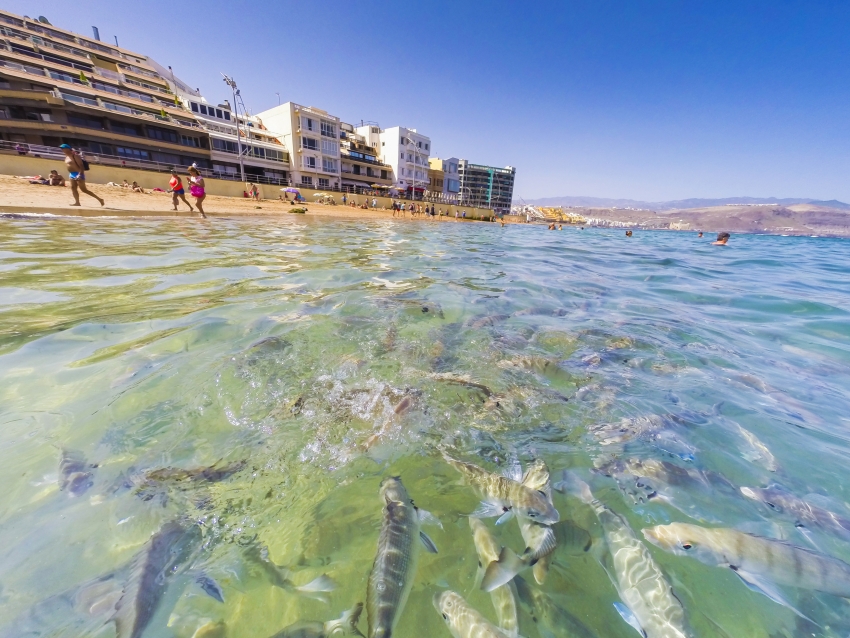The species was discovered by rock climbers in 1999 and its origins and rarity are still a mystery.
Botanists have collected seeds from the wild trees and the species is now safe from extinction in the Jardin Canario Botanical Garden in Tafira. In fact, the biggest one in the garden has just set seed for the first time ever.
To see a wild Gran Canaria dragon tree, drive up the Arguineguín Valley to the tiny village of Cercado de Espino and look north north-west. A wild dragon tree sticks out on the western side of the high cliffs. That's as close as you'll get to the trees unless you climb the sheer rocks face where they live.
There's an easier way to get up close and personal with a dragon: Head to the Jardin Canario and you'll see the first generation of babies planted out and already growing into big, spiky trees. The biggest one is in a wire cage to protect the seeds because an obsessive plant collector once spent all night digging up the wrong tree (if you're reading this, you got a Socotran dragon tree and the garden would like it back).
The Canary Islands dragon tree
While the Gran Canaria dragon tree clings on to its cliff-edge refuge, the Canary Islands dragon tree (Dracaena draco) grows in parks and gardens all over the island. You can't miss their fat grey trunks and stumpy branches crowned with long pointed leaves. Dragon trees can be 20 metres high with a trunk 20 metres in circumference.
The Canary Islands dragon tree also grows in the Cape Verde Islands and Madeira, and was recently discovered in Morocco. It's rare in the wild in Gran Canaria but starting recover.
Dragon's blood and other legends
Dragon trees produce sap that hardens into red blobs. Ancient and medieval doctors called it dragon's blood and believed that it had magical properties. It was once worth its weight in gold and it's possible that the Romans used to come to the Canary Islands to harvest dragon's blood.
Modern testing has shown that it has no medicinal properties at all.
The Gran Canaria and Canary Island dragon trees are just two of the 600 unique plants in the Canary Islands (100 of which grow only in Gran Canaria). They are one of the many things that make the islands such a natural paradise.














